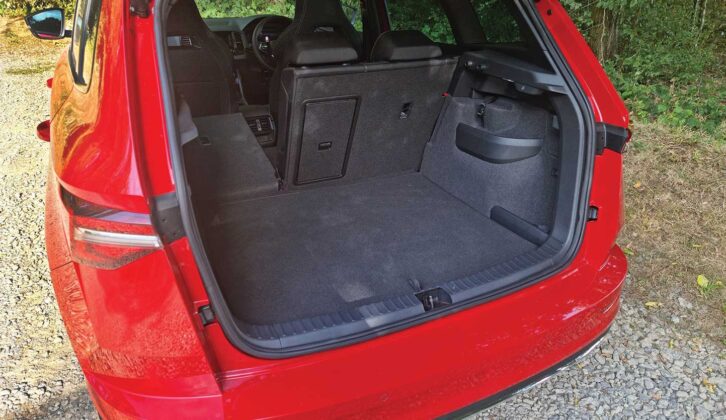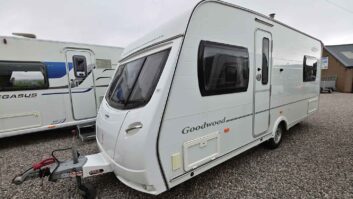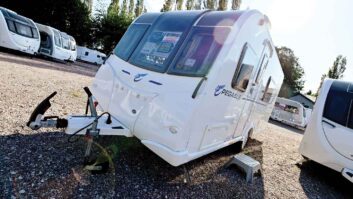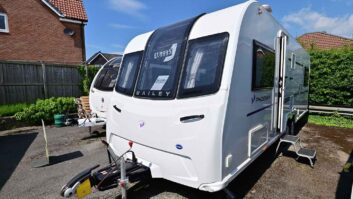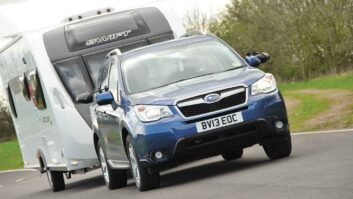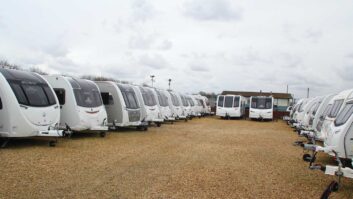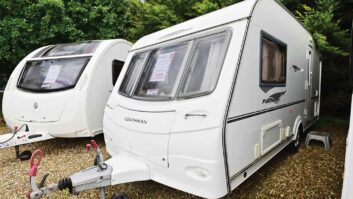The Škoda Yeti was one of the most popular SUVs during its lifetime, which made it quite long-lived. However, there’s no denying that when the car was getting towards the end of its existence, it had become a bit of an old crock. So Škoda set to work and replaced it with a larger, classier car – and the old crock became the new Škoda Karoq.
Now, does the current vehicle represent a crock of gold for those on the hunt for the best used tow car? Or is it just a crock?
What’s a used Škoda Karoq like inside?
Where the old Yeti had a slightly utilitarian ambience, the new Karoq replaced this with an interior that feels decidedly classier and aimed more at family buyers.
To that end, there’s loads of room up front for two tall adults, while passengers in the rear seats will find themselves just as well served with space, ideal for those touring in a family caravan.
Better still, getting into and out of the rear seats is very easy, because the doors on this car open exceptionally wide.

Boot space is on a par with that to be found in rivals, and you can slide forward the rear seats to increase the capacity from 479 litres to a very welcome 588 litres.
Folding down those rear seats does leave a ridge in the boot floor, but the Karoq has a trump card – go for an SE L or Edition model and the rear seats can be removed.
This was an option on lower-spec cars (called VarioFlex), and is so useful that we would strongly recommend searching for a model that has it fitted.
There isn’t much need to look beyond entry-level SE models, which come with dual-zone climate control, cruise control, electric windows and infotainment with Apple CarPlay and Android Auto. Combine this with the best caravan sat nav and you’ll be ready for towing.
How does a used Škoda Karoq drive?
There are numerous engines available in the Karoq, from a 1.0-litre petrol up to a 187bhp turbodiesel, but we’d recommend the 148bhp 2.0 TDI. Find a four-wheel drive that has the DSG dual-clutch gearbox fitted and it will make a fine tow car, as seen with the Škoda Karoq 2.0 TDI 150PS Sportline 4×4 DSG that tester David Motton gave 4.5/5 stars when he put it to the test.

For a start, it’s strong enough to make light work of hill starts on steep slopes (helped by the electronic handbrake), and while performance isn’t blistering, it’s just about punchy enough. Of greater import to many tow car buyers will be the fact that a real-world average economy figure of about 50mpg is possible (when unhitched).
The Karoq has quite soft suspension, which is great for comfort, but can allow a little movement from a caravan at speed on a windy day. But the light, accurate steering means you always feel in control. It makes parking a piece of cake, too.
Take a look at our guide to matching a car to a caravan to make sure you have a sensible towing match too.
How much to pay for a used Skoda Karoq
- High: price: £35,600; model: 2023 1.5 TSI Sportline DSG; miles: 18,600
- Sweet spot: price: £14,495; model: 2019 2.0 TDI SE; miles: 21,300
- Low: price: £8495; model: 2018 1.0 TSI SE; miles: 104,300
What will a used Škoda Karoq tow?
- Kerbweight: 1561kg
- Towing limit: 2000kg
- Noseweight limit: 88kg
- 85% match: 1327kg
Running costs
- Insurance group: 17
- Annual VED: £190
- Average economy: 56.5mpg
- Full service: £179
Servicing prices supplied by Servicing Stop, 0844 324 5262, www.servicingstop.co.uk
Škoda Karoq reliability issues
The Škoda Karoq has been recalled to dealers on a few occasions. Some early cars were recalled because the centre rear headrest had a potential manufacturing fault.
Incorrect welding in the rear bench also resulted in another recall.
Then 1231 vehicles were recalled because it was found that the engine might produce too little torque at times, which meant that a software update was required.
A full list of recalls can be found at check-vehicle-recalls.service.gov.uk.
Verdict
The Karoq makes a fine tow car. It’s strong enough to deal with a caravan, and tech such as the electronic handbrake makes hill starts simple. It’s roomy and comfortable, and easy to drive when it isn’t hitched up.
Better still, 50-plus mpg economy and low insurance groupings will help to keep down your running costs. So the Karoq really is a crock of tow car gold.
Unsure what type of car you should be looking at? We take a look at the hybrid vs plug-in hybrid vs electric debate to help you settle on the right model for your towing needs.
Alternatives to the Škoda Karoq
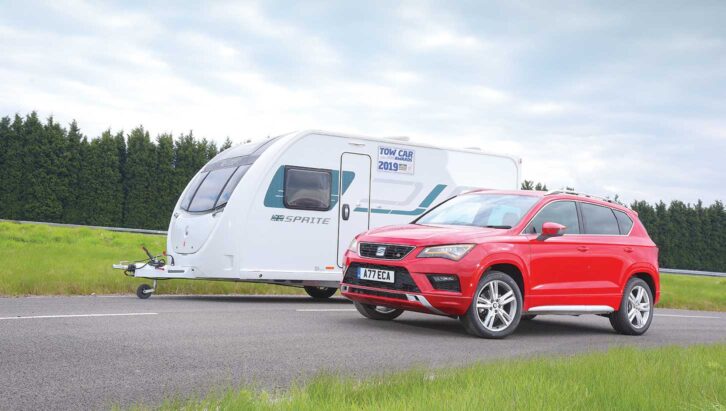
Seat Ateca (2017-)
The Seat Ateca has been around for roughly the same time as the Karoq. It’s larger than the Škoda, with more boot space. But it doesn’t have removable rear seats. It has similar powertrains to the Karoq, but has been set up to be much sportier to drive, so it’s good fun. However, the enjoyment can come at the cost of an overly firm ride at times.
See what we made of the 2021 Seat Ateca 2.0 TDI 150PS 4Drive Xperience Lux DSG.

Used Volvo XC40 (2017-)
The XC40 may be one of Volvo’s smaller SUVs, but it tows just as well as the larger models. The D4 generates 295lb ft of torque, so can easily get a heavier van moving, even if the engine might sound a little gruff. And all the while you’ll be sitting in a roomy interior that is the epitome of Scandi cool. Just bear in mind that the boot isn’t as big as those in some rivals.
If you’ve enjoyed reading this article, why not get the latest news, reviews and features delivered direct to your door or inbox every month. Take advantage of our brilliant Practical Caravan magazine SUBSCRIBERS’ OFFER and SIGN UP TO OUR NEWSLETTER for regular weekly updates on all things caravan related.


